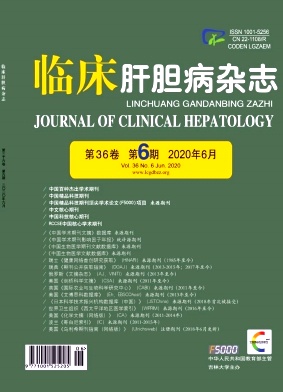|
[1] TORRE LA,BRAY F,SIEGEL RL,et al. Global cancer statistics,2012[J]. CA Cancer J Clin,2015,65(2):87-108.
|
|
[2] CHEN W,ZHENG R,BAADE PD,et al. Cancer statistics in china,2015[J]. CA Cancer J Clin,2016,66(2):115-132.
|
|
[3] ASKAUTRUD HA,GJERNES E,GUNNES G,et al. Global gene expression analysis reveals a link between NDRG1 and vesicle transport[J]. PLo S One,2014,9(1):e87268.
|
|
[4] PAN H,ZHANG X,JIANG H,et al. Ndrg3 gene regulates DSB repair during meiosis through modulation the ERK signal pathway in the male germ cells[J]. Sci Rep,2017,7:44440.
|
|
[5] LUO Q,WANG CQ,YANG LY,et al. FOXQ1/NDRG1 axis exacerbates hepatocellular carcinoma initiation via enhancing crosstalk between fibroblasts and tumor cells[J]. Cancer Lett,2018,417:21-34.
|
|
[6] JING JS,LI H,WANG SC,et al. NDRG3 overexpression is associated with a poor prognosis in patients with hepatocellular carcinoma[J]. Biosci Rep,2018,38(6):BSR20180907.
|
|
[7] WANG J,YIN D,XIE C,et al. The iron chelator Dp44mT inhibits hepatocellular carcinoma metastasis via N-Myc downstream-regulated gene 2(NDRG2)/gp130/STAT3 pathway[J]. Oncotarget,2014,5(18):8478-8491.
|
|
[8] RHODES DR,YU J,SHANKER K,et al. ONCOMINE:A cancer microarray database and integrated data-mining platform[J].Neoplasia,2004,6(1):1-6.
|
|
[9] TANG Z,LI C,KANG B,et al. GEPIA:A web server for cancer and normal gene expression profiling and interactive analyses[J]. Nucleic Acids Res,2017,45(W1):w98-w102.
|
|
[10] MENYHRT O,NAGY,GYRFFY B. Determining consistent prognostic biomarkers of overall survival and vascular invasion in hepatocellular carcinoma[J]. R Soc Open Sci,2018,5(12):181006.
|
|
[11] CHEN X,CHEUNG ST,SO S,et al. Gene expression patterns in human liver cancers[J]. Mol Biol Cell,2002,13(6):1929-1939.
|
|
[12] WURMBACH E,CHEN YB,KHITROV G,et al. Genome-wide molecular profiles of HCV-induced dysplasia and hepatocellular carcinoma[J]. Hepatology,2007,45(4):938-947.
|
|
[13] LUO EC,CHANG YC,SHER YP,et al. MicroRNA-769-3p down-regulates NDRG1 and enhances apoptosis in MCF-7cells during reoxygenation[J]. Sci Rep,2014,4:5908.
|
|
[14] LI EY,HUANG WY,CHANG YC,et al. Aryl Hydrocarbon receptor activates NDRG1 transcription under hypoxia in breast cancer cells[J]. Sci Rep,2016,6:20808.
|
|
[15] LI Y,PAN P,QIAO P,et al. Downregulation of N-myc downstream regulated gene 1 caused by the methylation of CpG islands of NDRG1 promoter promotes proliferation and invasion of prostate cancer cells[J]. Int J Oncol,2015,47(3):1001-1008.
|
|
[16] WANG PX,YANG X,ZHAO J,et al. The metastasis suppressor,NDRG1,inhibits “stemness” of colorectal cancer via down-regulation of nuclearβ-catenin and CD44[J]. Oncotarget,2015,6(32):33893-33911.
|
|
[17] SONG Y,WU G,ZHANG M,et al. N-myc downstreamregulated gene 1 inhibits the proliferation and invasion of hepatocellular carcinoma cells via the regulation of integrinβ3[J].Oncol Lett,2017,13(5):3599-3607.
|
|
[18] YU C,WU G,DANG N,et al. Inhibition of N-myc downstream-regulated gene 2 in prostatic carcinoma[J]. Cancer Biol Ther,2011,12(4):304-313.
|
|
[19] YIN A,WANG C,SUN J,et al. Overexpression of NDRG2 increases iodine uptake and inhibits thyroid carcinoma cell growth in situ and in vivo[J]. Oncol Res,2016,23(1-2):43-51.
|
|
[20] SHEN L,QU X,LI H,et al. NDRG2 facilitates colorectal cancer differentiation through the regulation of Skp2-p21/p27 axis[J]. Oncogene,2018,37(13):1759-1774.
|
|
[21] CAO W,YU G,LU Q,et al. Low expression of N-myc downstream-regulated gene 2 in oesophageal squamous cell carcinoma correlates with a poor prognosis[J]. BMC Cancer,2013,13:305.
|
|
[22] SONG SP,ZHANG SB,LIU R,et al. NDRG2 down-regulation and CD24 up-regulation promote tumor aggravation and poor survival in patients with gallbladder carcinoma[J]. Med Oncol,2012,29(3):1879-1885.
|
|
[23] LI R,YU C,JIANG F,et al. Overexpression of N-Myc downstream-regulated gene 2(NDRG2)regulates the proliferation and invasion of bladder cancer cells in vitro and in vivo[J].PLo S One,2013,8(10):e76689.
|
|
[24] HUANG J,WU Z,WANG G,et al. N-Myc downstreamregulated gene 2 suppresses the proliferation of T24 human bladder cancer cells via induction of oncosis[J]. Mol Med Rep,2015,12(4):5730-5736.
|
|
[25] WANG J,YIN D,XIE C,et al. The iron chelator Dp44mT inhibits hepatocellular carcinoma metastasis via N-Myc downstream-regulated gene 2(NDRG2)/gp130/STAT3 pathway[J]. Oncotarget,2014,5(18):8478-8491.
|
|
[26] LI B,SHAO Q,JI D,et al. Combined aberrant expression of N-Myc downstream-regulated gene 2 and CD24 is associated with disease-free survival and overal survival in patients with hepatocellular carcinoma[J]. Diagn Pathol,2014,9:209.
|
|
[27] KIM KR,KIM KA,PARK JS,et al. Structural and biophysical analyses of human N-Myc downstream-regulated gene 3(NDRG3)protein[J]. Biomolecules,2020,10(1),90.
|
|
[28] MA J,LIU S,ZHANG W,et al. High expression of NDRG3 associates with positive lymph node metastasis and unfavourable overall survival in laryngeal squamous cell carcinoma[J]. Pathology,2016,48(7):691-696.
|
|
[29] REN GF,TANG L,YANG AQ,et al. Prognostic impact of NDRG2 and NDRG3 in prostate cancer patients undergoing radical prostatectomy[J]. Histol Histopathol,2014,29(4):535-542.
|
|
[30] LUO X,HOU N,CHEN X,et al. High expression of NDRG3associates with unfavorable overall survival in non-small cell lung cancer[J]. Cancer Biomark,2018,21(2):461-469.
|
|
[31] FAN CG,WANG CM,TIAN C,et al. miR-122 inhibits viral replication and cell proliferation in hepatitis B virus-related hepatocellular carcinoma and targets NDRG3[J]. Oncol Rep,2011,26(5):1281-1286.
|
|
[32] JING JS,LI H,WANG SC,et al. NDRG3 overexpression is associated with a poor prognosis in patients with hepatocellular carcinoma[J]. Biosci Rep,2018,38(6):BSR20180907.
|
|
[33] KOTIPATRUNI RP,FERRARO DJ,REN X,et al. NDRG4,the N-Myc downstream regulated gene,is important for cell survival,tumor invasion and angiogenesis in meningiomas[J].Integr Biol(Camb),2012,4(10):1185-1197.
|
|
[34] MELOTTE V,LENTJES MH,VAN DEN BOSCH SM,et al. NMyc downstream-regulated gene 4(NDRG4):A candidate tumor suppressor gene and potential biomarker for colorectal cancer[J]. J Natl Cancer Inst,2009,101(13):916-927.
|













 DownLoad:
DownLoad: